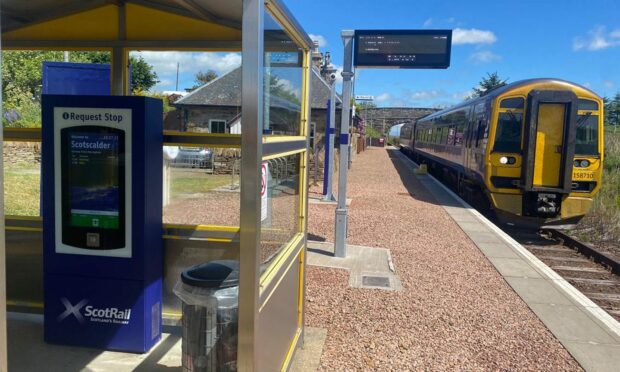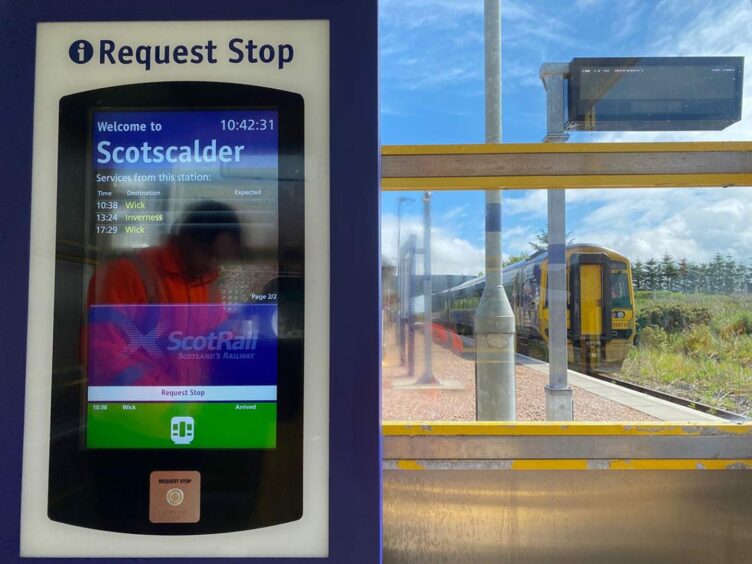Five new request-stop kiosks have been installed at stations along the Far North Line through the Highlands.
Due to low user numbers at many stations along the route, passengers previously needed to put their hand out to signal to a train if they wanted to get on board.
The new kiosks mean people at Kinbrace, Kildonan, Rogart, Invershin and Culrain stations can now electronically let the driver know to stop.
These are some of the least used stations in the UK and the kiosk rollout is part of a broader £5 million package of investment in the line’s radio signalling system.
A request-stop kiosk was installed at Scotscalder earlier in the year and two more are planned for Altnabreac and Dunrobin Castle in early 2023.
Encouraging travel around the Highlands
The new kiosks work using a radio system to send a message to the driver’s cab with just the push of a button from the station platform.
Passengers onboard wishing to leave the train at these stations will still need to speak to the conductor to do so.
David Simpson, service delivery director at ScotRail, said: “By enabling the driver to be alerted in advance of the need to stop in the station, rather than being reliant on hand-signalling, it delivers a safer and more reliable system, and means that trains don’t need to slow down at stations where there are no passengers waiting.”
Network Rail’s development manager for the work on the Far North Line, Cara Healey, added: “This new system makes it easier to use some of the most remote stations on our network and hopefully help encourage more people to travel into the Highlands to walk, climb, cycle and sightsee.”


Conversation